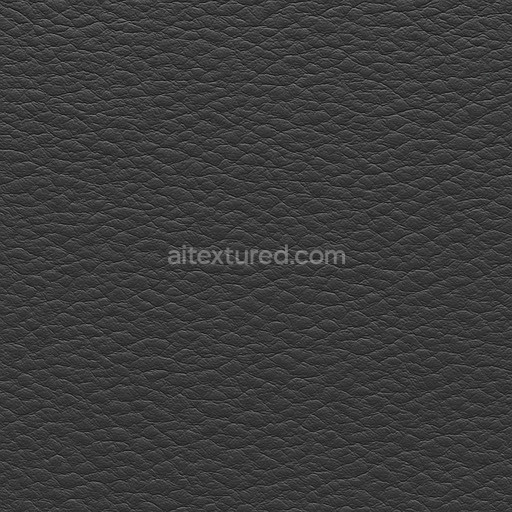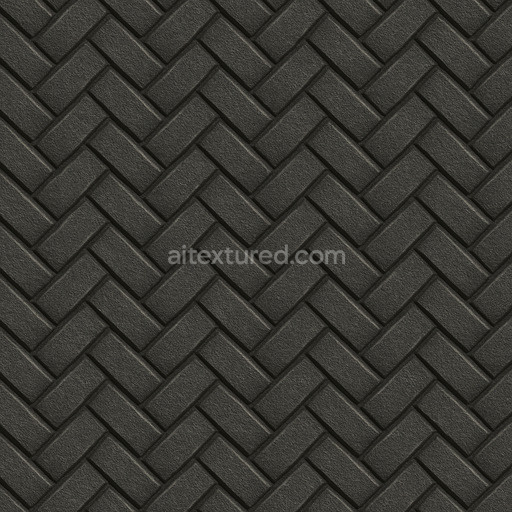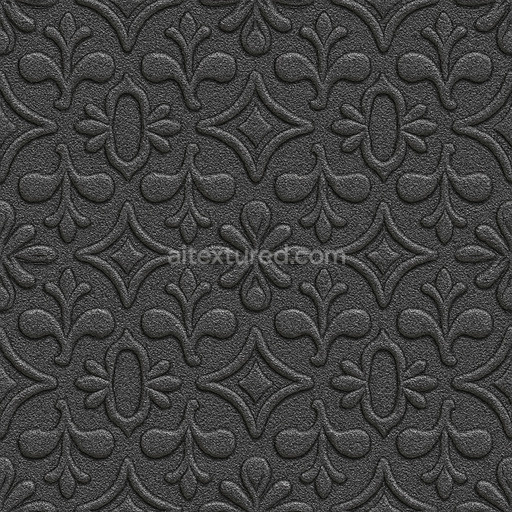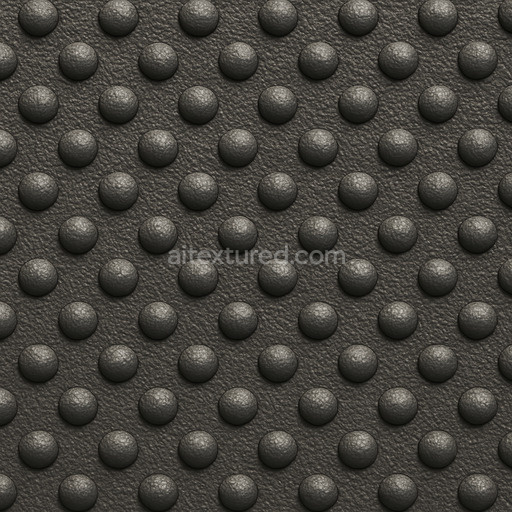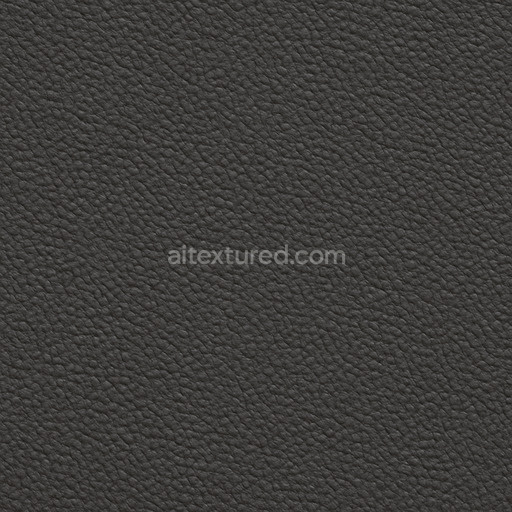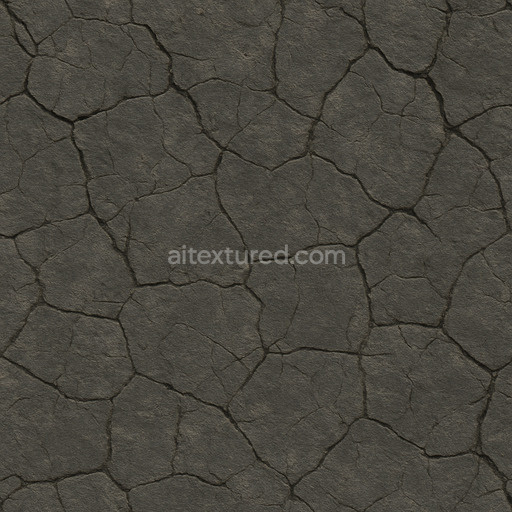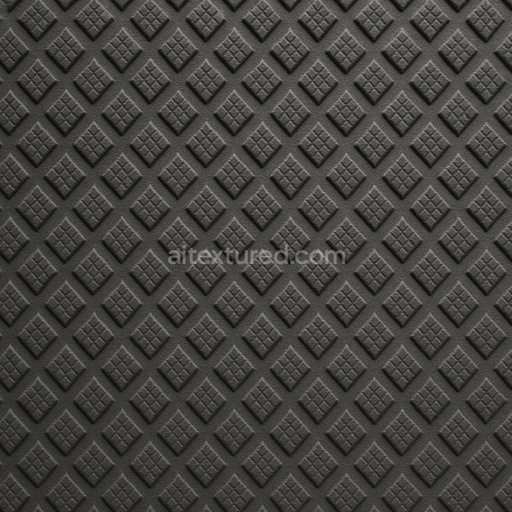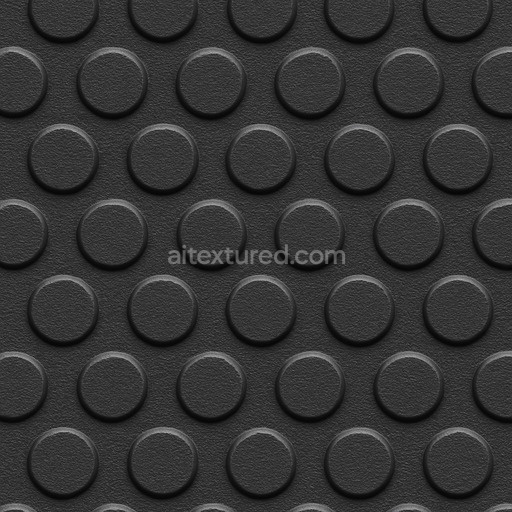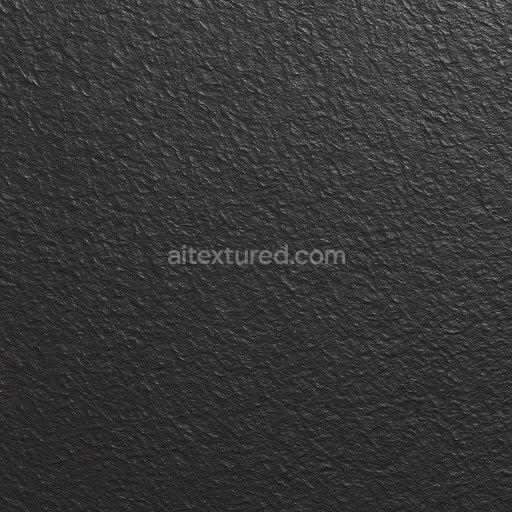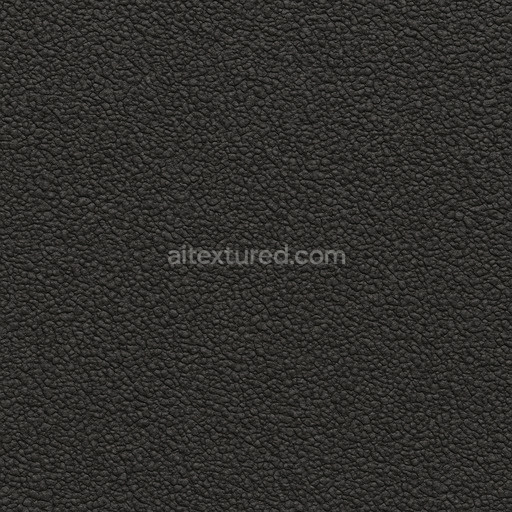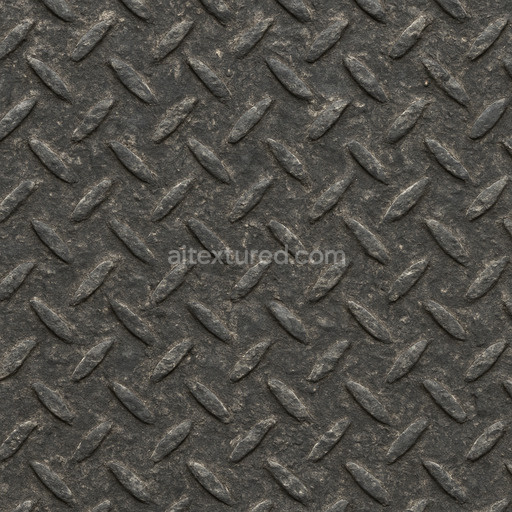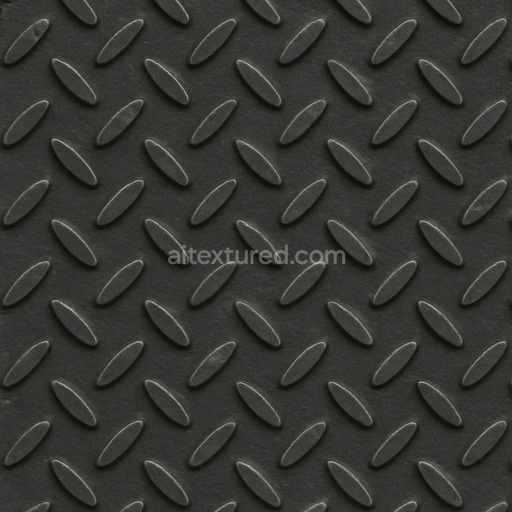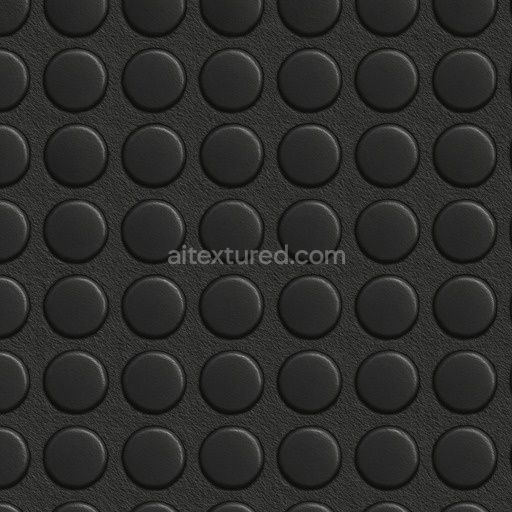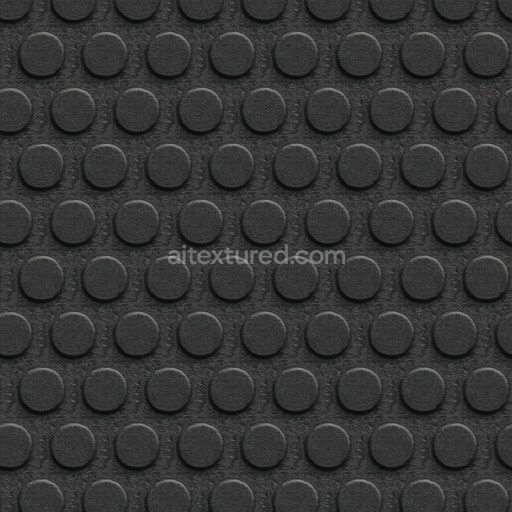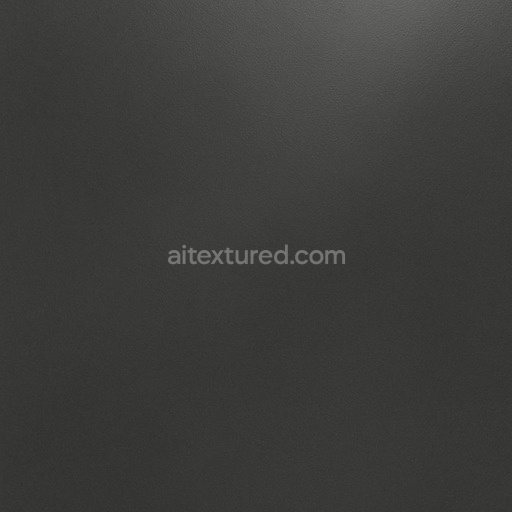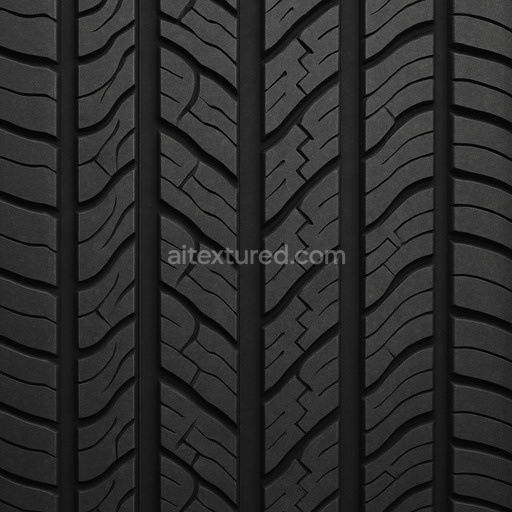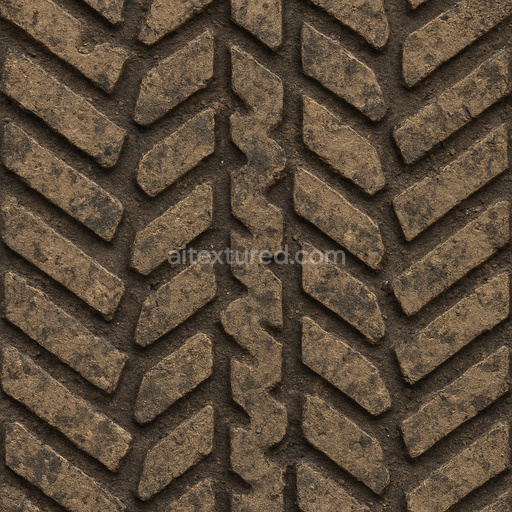The rubber conveyor belt woven imprint texture is a meticulously AI-generated seamless pattern designed to authentically replicate the complex surface of industrial rubber conveyor belts. At its foundation this material simulates a polymer-based rubber substrate reinforced with interlaced woven fibers creating a durable composite structure commonly found in heavy-duty conveyor belts. The woven imprint pattern reveals the precise orientation of fibers embedded within the rubber matrix characterized by subtle raised ridges and fine grooves that form a tactile micro-structure. The surface finish presents a matte appearance with slight roughness capturing the natural texture of black rubber combined with the distinctive imprint of woven fibers. Deep black coloration results from carefully simulated pigments and carbon black additives while the texture’s porosity and weathering effects are conveyed through delicate displacement and ambient occlusion details simulating realistic surface wear and nuanced light absorption variations typical of industrial settings.
This tileable rubber conveyor belt woven imprint texture set is optimized for physically based rendering (PBR) workflows including a comprehensive suite of maps: BaseColor (Albedo) Normal Roughness Metallic Ambient Occlusion and Height/Displacement. The BaseColor channel accurately portrays the uniform black rubber tone enhanced by subtle fiber shadows and pigment granularity. The Normal map accentuates the raised woven fibers and micro surface irregularities adding depth and structural detail. Roughness values are carefully calibrated to reflect the matte slightly rough finish of rubber with nuanced differences between raised fiber areas and recessed zones. The Metallic channel remains minimal consistent with the non-metallic nature of rubber materials. Ambient Occlusion enriches shadowing within the weave’s crevices enhancing realism by simulating natural light occlusion. The Height/Displacement map provides subtle elevation differences that emphasize the tactile quality of the woven imprint ideal for close-up renders and detailed surface complexity.
Available in resolutions up to 8K this seamless rubber conveyor belt woven imprint texture ensures that every detail of the fiber structure and rubber surface remains crisp and consistent even when applied over large areas without visible repetition. It is fully compatible with major 3D software platforms such as Blender Unreal Engine and Unity making it a versatile asset for a wide range of projects—from real-time environments and cinematic visualization to material studies requiring authentic rubber textures. For best results adjusting the UV scale to maintain proportional pattern size relative to your 3D mesh is recommended preserving the natural appearance of the woven imprint. Additionally fine-tuning roughness and normal map intensity can enhance how the material interacts with environmental lighting ensuring it integrates convincingly into your scene.
Designed to meet the needs of professional 3D artists and developers this ai texture rubber conveyor belt woven imprint combines technical accuracy with artistic detail to deliver realistic rubber textures featuring complex woven patterns. Its seamless tileability high-resolution output and detailed map set provide a reliable foundation for creating authentic rubber materials that hold up under close scrutiny. Incorporating height or displacement maps further elevates tactile realism in close-up views enabling efficient production of high-quality renders and immersive 3D previews across diverse rendering workflows and projects.
How to Use These Seamless PBR Textures in Blender
This guide shows how to connect a full PBR texture set to Principled BSDF in Blender (Cycles or Eevee). Works with any of our seamless textures free download, including PBR PNG materials for Blender / Unreal / Unity.
What’s inside the download
*_albedo.png — Base Color (sRGB)*_normal.png — Normal map (Non-Color)*_roughness.png — Roughness (Non-Color)*_metallic.png — Metallic (Non-Color)*_ao.png — Ambient Occlusion (Non-Color)*_height.png — Height / Displacement (Non-Color)*_ORM.png — Packed map (R=AO, G=Roughness, B=Metallic, Non-Color)

Quick start (Node Wrangler, 30 seconds)
- Enable the addon: Edit → Preferences → Add-ons → Node Wrangler.
- Create a material and select the Principled BSDF node.
- Press Ctrl + Shift + T and select the maps
albedo, normal, roughness, metallic (skip height and ORM for now) → Open.
The addon wires Base Color, Normal (with a Normal Map node), Roughness, and Metallic automatically.
- Add AO and Height using the “Manual wiring” steps below (5 and 6).
Manual wiring (full control)
- Create a material (Material Properties → New) and open the Shader Editor.
- Add an Image Texture node for each map. Set Color Space:
- Albedo → sRGB
- AO, Roughness, Metallic, Normal, Height, ORM → Non-Color
- Connect to Principled BSDF:
albedo → Base Colorroughness → Roughnessmetallic → Metallic (for wood this often stays near 0)normal → Normal Map node (Type: Tangent Space) → Normal of Principled.
If details look “inverted”, enable Invert Y on the Normal Map node.
- Ambient Occlusion (AO):
- Add a MixRGB (or Mix Color) node in mode Multiply.
- Input A =
albedo, Input B = ao, Factor = 1.0.
- Output of Mix → Base Color of Principled (replaces the direct albedo connection).
- Height / Displacement:
Cycles — true displacement
- Material Properties → Settings → Displacement: Displacement and Bump.
- Add a Displacement node: connect
height → Height, set Midlevel = 0.5, Scale = 0.02–0.08 (tune to taste).
- Output of Displacement → Material Output → Displacement.
- Add geometry density (e.g., Subdivision Surface) so displacement has polygons to work with.
Eevee (or lightweight Cycles) — bump only
- Add a Bump node:
height → Height.
- Set Strength = 0.2–0.5, Distance = 0.05–0.1, and connect Normal output to Principled’s Normal.
Using the packed ORM texture (optional)
Instead of separate AO/Roughness/Metallic maps you can use the single *_ORM.png:
- Add one Image Texture (Non-Color) → Separate RGB (or Separate Color).
- R (red) → AO (use it in the Multiply node with albedo as above).
- G (green) → Roughness of Principled.
- B (blue) → Metallic of Principled.
UVs & seamless tiling
- These textures are seamless. If your mesh has no UVs, go to UV Editing → Smart UV Project.
- For scale/repeat, add Texture Coordinate (UV) → Mapping and plug it into all texture nodes.
Increase Mapping → Scale (e.g., 2/2/2) to tile more densely.
Recommended starter values
- Normal Map Strength: 0.5–1.0
- Bump Strength: ~0.3
- Displacement Scale (Cycles): ~0.03
Common pitfalls
- Wrong Color Space (normals/roughness/etc. must be Non-Color).
- “Inverted” details → enable Invert Y on the Normal Map node.
- Over-strong relief → lower Displacement Scale or Bump Strength.
Example: Download Wood Textures and instantly apply parquet or rustic planks inside Blender for architectural visualization.
To add the downloaded texture, go to Add — Texture — Image Texture.

Add a node and click the Open button.

Select the required texture on your hard drive and connect Color to Base Color.

